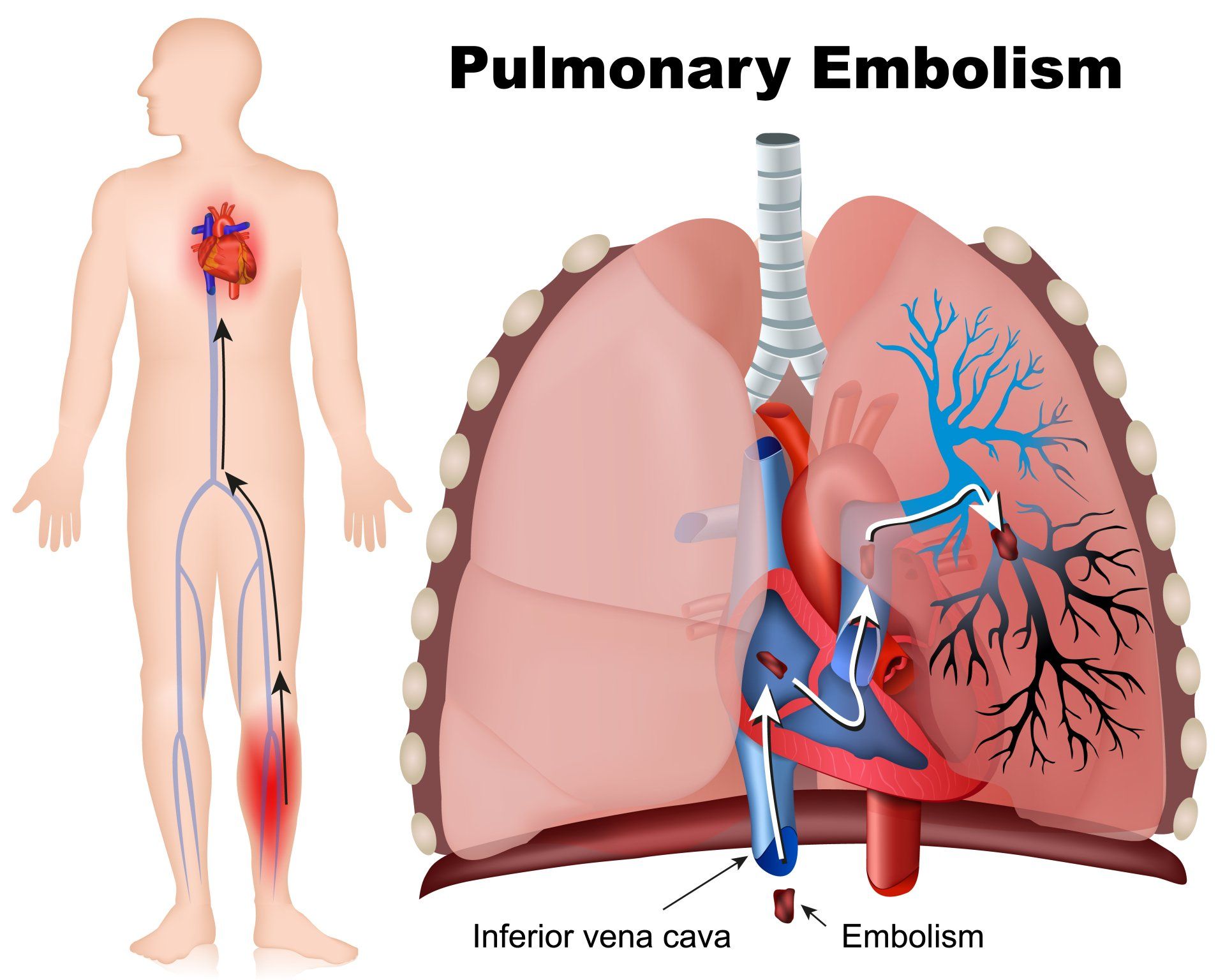Pulmonary Embolism

Pulmonary Embolism (PE) is a blockage in the blood vessels in the lungs. This blockage is most often clot that formed in the leg veins (DVT) or pelvic veins. This clot in the legs then breaks off and travels to the lungs. It is a very serious condition that can lead to death if untreated.
Risk Factors
- Prolonged lack of movement because of hospitalization, a long flight or drive, paralysis, or illness
- Obesity
- Cigarette smoking
- A personal or family history of DVT
- Older age
- Pregnancy and up to 6 weeks after giving birth
- Injury due to surgery, a broken bone, or other trauma
- Dehydration
- Recent surgery, especially abdominal surgery, knee or hip surgery
- Recent or ongoing treatment of cancer
- Blood disorders that make your blood thicker or more likely to clot than normal
- Medications, especially birth control pills and hormones
Symptoms
- Shortness of breath. Can be mild or severe and usually comes on suddenly.
- Chest pain. This pain is often sharp, and worse when taking a deep breath. It may be one sided or both sides and may radiate to the back.
- Bloody cough (hemoptysis). This is more rare, but may indicate a more severe blood clot.
- Rapid heart beat.
- Lightheadedness or even passing out or fainting.
- Leg swelling, pain, or other symptoms of Deep Vein Thrombosis (DVT).
Diagnosis
- History and Physical Exam. Your physician will ask you about your symptoms, taking a good history including your medical problems, asking about any family history of clotting problems, reviewing medications (especially those that may cause clotting problems), and doing a good physical exam, vital signs may show a fast heart rate, fast breathing, and low oxygen level. He/she will perform a complete physical exam, especially the listening to the lungs and heart as well as looking for swelling in the legs (DVT),
- Blood work may give clues as well as rule out other causes of chest pain and shortness of breath.
- EKG to make sure your chest pain isn't from a heart attack.
- Chest Xray to rule out other causes of shortness of breath and chest pain including pneumonia or fluid build up.
- CT scan of the arteries in the chest (CTA chest) will definitively diagnose Pulmonary Embolism (PE).
Treatment
- Blood thinner. Usually heparin or lovenox initially. Later followed by blood thinning medication taken by mouth like coumadin (warfarin) or the newer oral anticoagulants like Eliquis and Xarelto. These are usually given for 6 months to one year, but may be life long for some patients.
- Minimally invasive treatment. This is performed by a vascular surgeon. If the pulmonary embolism is severe with heart strain and/or impending respiratory failure, a Pulmonary Arteriogram with Suction Thrombectomy (special large tubes to suck clot out of the lung vessels) and/or TPA Thrombolysis (clot busting medications injected directly into the blood clots). This is usually performed in the operating room through a puncture and large sheath in the femoral/groin vein.
- Surgery. Sometimes performed by a cardiothoracic/CT surgeon in the worst cases or more chronic clots in the lungs.
*If you think you are having this problem, call 911 or go to the nearest emergency room for evaluation!


